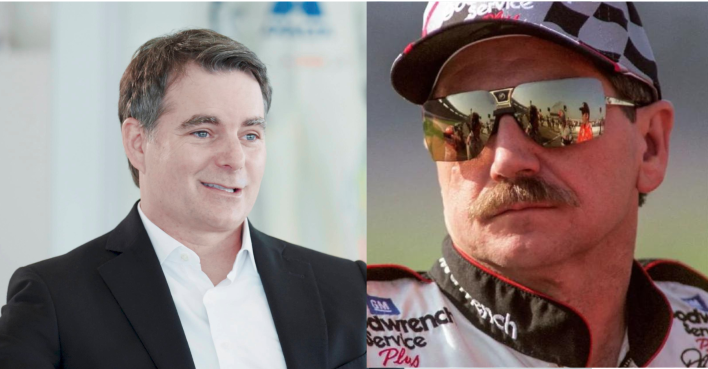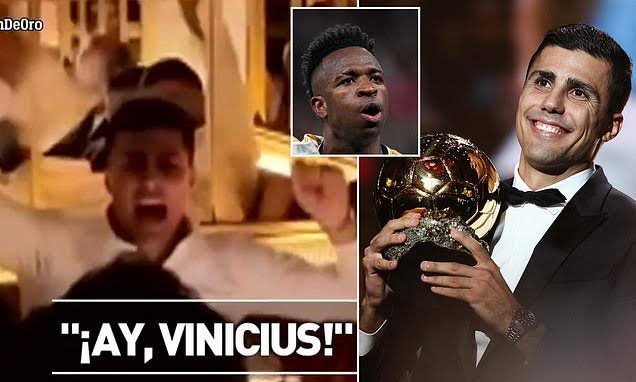Live Feed: Jeff Gordon’s Iconic Daytona Triumph Amid Hendrick’s Fight
Pressure, uncertainty, and the weight of expectations—this was the atmosphere surrounding Jeff Gordon as he prepared for the 1997 Daytona 500. On paper, Hendrick Motorsports seemed unstoppable, with two Cup champions—Jeff Gordon (1995) and Terry Labonte (1996)—and rising star Ricky Craven leading their charge. But off the track, the team faced a devastating challenge: Rick Hendrick, their leader, was battling an aggressive form of leukemia.
Rick Hendrick’s Presence in Spirit
Diagnosed in late 1996, Hendrick couldn’t join his team at Daytona, but his fight inspired their mission. Gordon’s car carried a sticker with 1-800-MARROW-2, a hotline for bone marrow donations, reminding everyone of the cause they were racing for. The team knew what a victory would mean—not just for their careers but for the man who built their foundation.
“It was tough,” Gordon later shared with HendrickMotorsports.com. “He was always at the track, especially for the Daytona 500, and you knew how much that race meant. We wanted to win it for him.”
Facing the Legacy of Daytona
At just 25, Jeff Gordon, the 1995 Cup champion, was already a star with 17 wins in the previous two seasons. But the Daytona 500 was a different beast—a race that had eluded even legends like Dale Earnhardt Sr. for nearly two decades. The stakes couldn’t have been higher for Gordon as he chased NASCAR’s crown jewel.
“First of all, it’s the DAYTONA 500, so just that in itself is such a big deal,” Gordon recalled. “From the first time we went, we ran good. But then you see how hard it is to win, knowing what Earnhardt had gone through for years… You don’t know. I’d watched him dominate and not get it done.”
The Race: Triumph Through Adversity
The race nearly unraveled for Gordon midway through. Fearing a right-rear tire issue, he made an unscheduled pit stop, falling a lap behind. A timely caution after Greg Sacks’ crash gave Gordon a lifeline, putting him back on the lead lap. Chaos soon followed, with contenders like Dale Jarrett, Ernie Irvan, and even Dale Earnhardt Sr. taken out in crashes.
With 12 laps remaining, a multi-car wreck triggered by Earnhardt’s loose car set the stage for Gordon and his teammates, Labonte and Craven, to challenge race leader Bill Elliott. The Hendrick trio lined up behind Elliott, ready to strike.
“Poor Bill Elliott is the leader, and he has three Hendrick cars behind him,” said Ray Evernham, Gordon’s crew chief. “He never had a chance.”
With six laps to go, Gordon made his move, diving under Elliott to take the lead as Labonte and Craven followed. The Hendrick cars crossed the finish line in formation—1-2-3—with Gordon claiming his first Daytona 500 victory.
A Victory for the Ages
“It was special for so many reasons,” Gordon reflected. “I was overwhelmed with winning the Daytona 500. Then I’m talking to Rick on the phone in victory lane, and he’s emotional and excited, and I was too. We’d accomplished what we set out to do. We lit up all the lines on 1-800-MARROW-2, making a difference in the world. It was a pretty amazing day.”
The race solidified Gordon’s status as a NASCAR superstar and marked a turning point for Hendrick Motorsports, which became the sport’s dominant force. From 1995 to 1998, they secured four consecutive championships, with Gordon winning three and Labonte capturing the 1996 title.
“They became the Yankees of the Babe Ruth era, the Packers of the Lombardi era, the Celtics of the Auerbach era,” said Ken Willis, a columnist for the Daytona Beach News-Journal. “They were becoming the gold standard of NASCAR.”
A Legacy Beyond Racing
The victory’s impact extended far beyond the track. The exposure of the 1-800-MARROW-2 hotline during the race led to an estimated 200,000 calls, boosting bone marrow donation awareness and cementing Hendrick Motorsports’ commitment to making a difference.
For Gordon and the team, the 1997 Daytona 500 wasn’t just a race—it was a testament to resilience, teamwork, and the power of hope. Decades later, the image of Hendrick’s cars crossing the finish line together remains an iconic moment, symbolizing a victory that defined an era and inspired countless fans.
“It wasn’t just a win for us,” Gordon said. “It was a win for Rick, a win for everyone who believed in us.”



